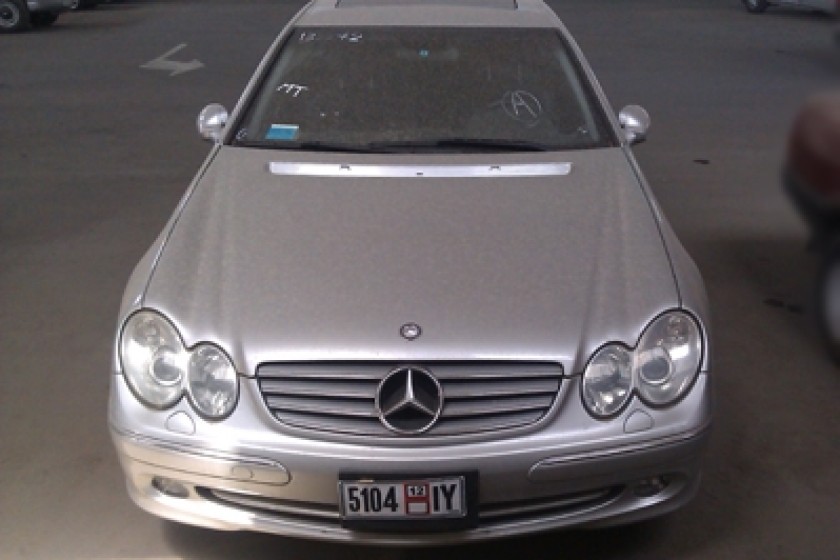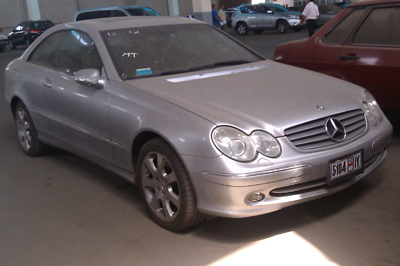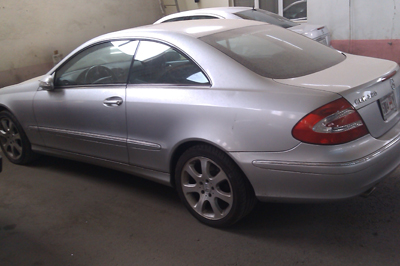
Customs Conspiracy? Student Fights for "Purchase Price" Method for Imported Mercedes
Six months ago, 25 year-old Sergey Grigoryan, a student at Yerevan State University’s Law Faculty, purchased a 2004 Mercedes Benz CLK 320 from the Trust Company for $10,000.
The car was shipped from Japan and finally made its way to the Georgian port of Batumi.
Sergey picked up the car and drove it to Armenia. That’s when his troubles began with Armenian customs officials.
“At customs, Armenian officials valued the car at $17,500 and told me I’d have to pay 34% of the value. I showed them the price actually paid and asked if they could use that as the basis. They told me to go to the head of the State Revenue Committee and plead my case,” Sergey recounts.
 |
| Sergey Grigoryan |
A few years ago, changes were made to custom regulations regarding the importation of automobiles. Cars less than five years old would get slapped with a 32% fee. Those importing five to ten year old cars would have to pay 34%; 11-to 15 year old cars, 42%, and cars 15 years and older, 52%.
The official explanation given at the time was that the government wanted to encourage the importation of new cars. Just the opposite happened, however, but that’s a separate topic altogether.
According to Armenian customs law, if an importer can certify the purchase price with appropriate documentation, then that amount is to be used as the basis for customs duties. Otherwise, it’s up to the customs agency to appraise the value of the item in Armenia according to some internal system.
State Revenue Committee (SRC) President Gagik Khachatryan rejected Sergey’s request to employ the actual purchase price. Artour Afrikyan, Khachatryan’s first deputy, replied that what was missing from the documentation were the expenses to unload the car at the Georgian port of Poti and to get it to the Armenian customs office at the border.
 |
| Artour Afrikyan |
“Had the officials taken a cursory glance at the documents he provided, they would have seen that the car was unloaded at Batumi and not Poti. They just went through the motions of examining my case,” argues Sergey.
If an imported car doesn’t get through customs in ten days, penalties are applied. To avoid this, Sergey handed the car over to the SRC. The student has been paying 1,300 AMD every day since July to have the car parked in the SRC lot.
Sergey again wrote to Gagik Khachatryan and again attached all pertinent documents. This time, Afrikyan changed his story and stated that the cargo expenses to get the car from Yokahama to the port of Nagoya were missing. They weren’t.
“I wrote Gagik Khachatryan a third time, pointing out the $300 receipt for shipping the car from Yokahama to Nagoya,” Sergey said.
In reply, Afrikyan wrote that the basis for the SRC’s rejection had already been sent in its previous two letters. The SRC stated that the case was closed.
From January 2010 to August 2012, only one-half of 1% of all the cars imported into Armenia have passed customs on the “purchase price” basis. We can only surmise that the lucky ones include top government officials and others with some pull.
 |
 |
During the above period, 55,747 passenger cars were imported to Armenia by individuals. Only 314 paid customs duties based on the purchase price.
The others had to pay on the basis of inflated appraisals made by customs officials.
But Sergey hasn’t given up. He has gone to court, demanding that the SRC levy duties on the purchase price of the Mercedes and compensate him for damages.
 Videos
Videos Photos
Photos
Comments (34)
Write a comment